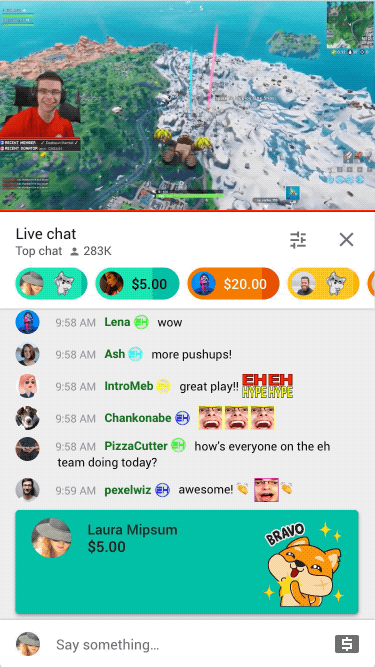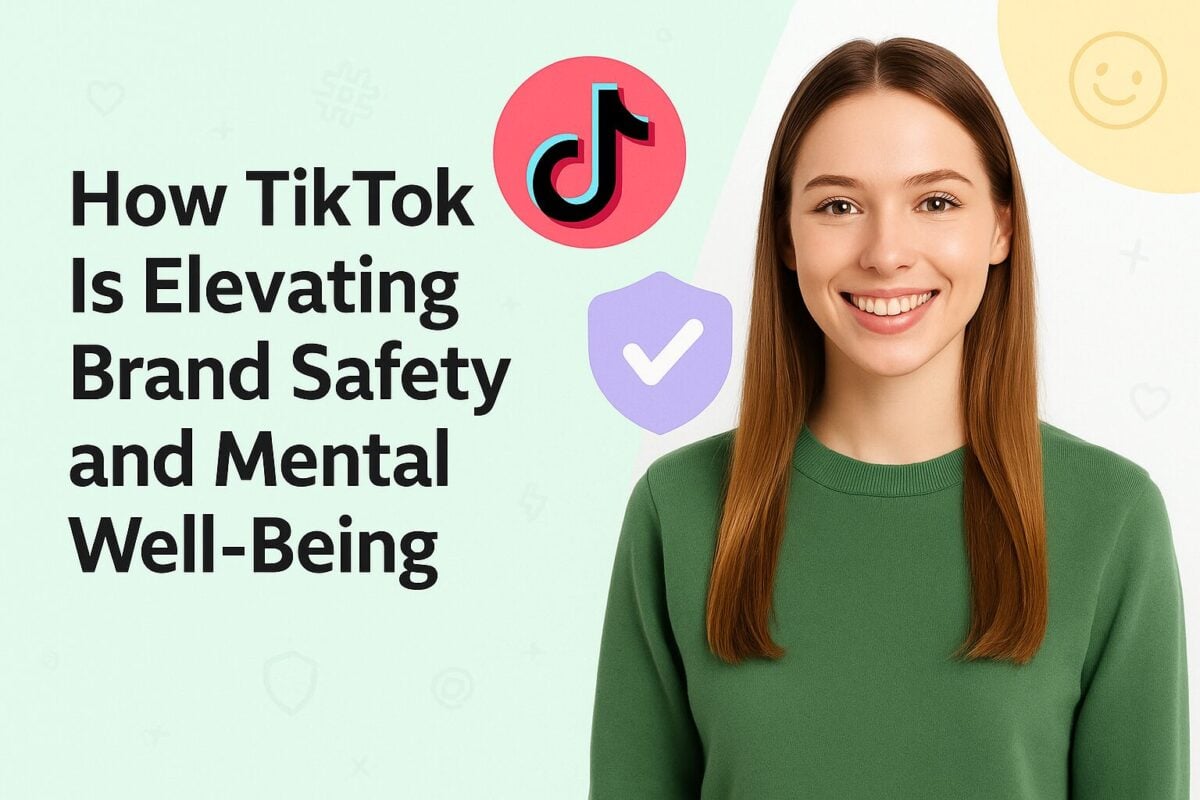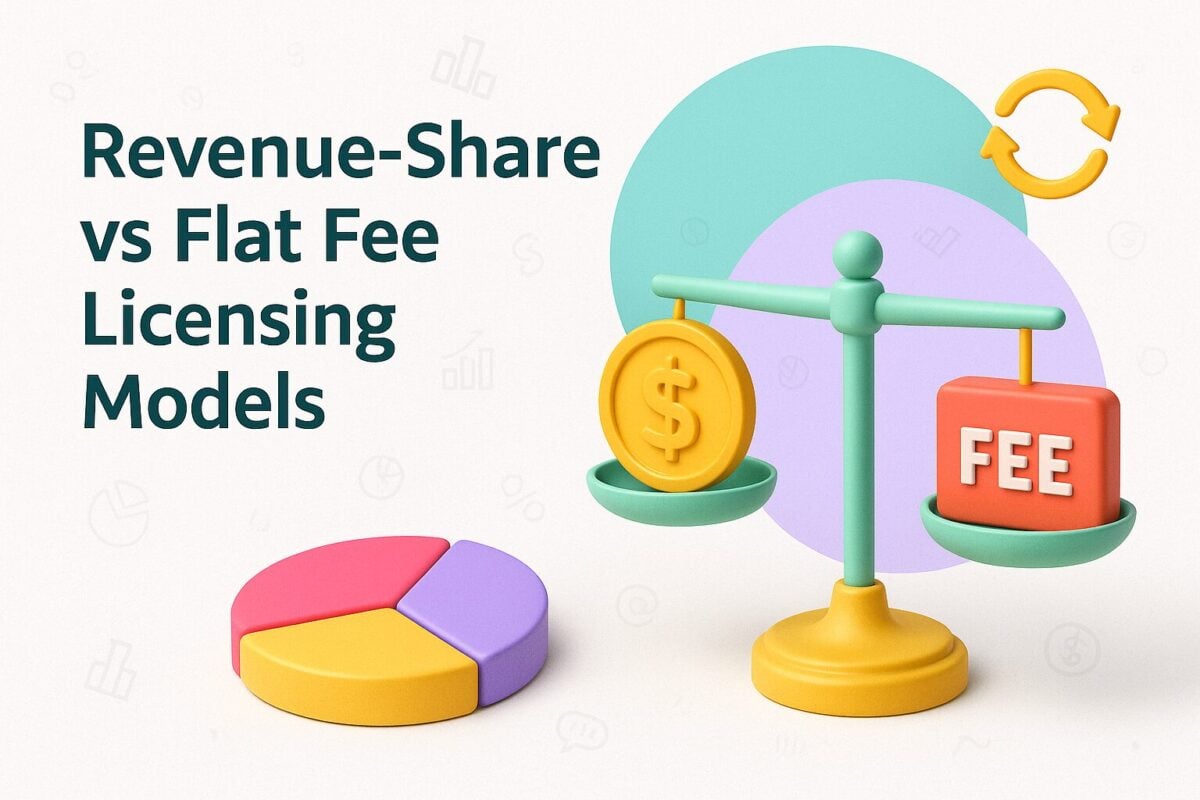YouTube has played around with its monetization options for creators over the last few years. We recently wrote about YouTube Super Chat, where “Super Fans” can pay to deliver a color-coded special message to a livestream. Another product YouTube has just added to help benefit creators is YouTube Super Stickers.
YouTube introduced several additional ways for creators to monetize content and videos at VidCon 2019. They learned from the success of Super Chat, now the number one revenue stream on YouTube for nearly 20,000 channels, and introduced Super Stickers, Channel Memberships, and expanded the YouTube Merch Shelf. More than 90,000 channels have received Super Chats since its inception, with some streams earning more than $400 per minute. According to Neal Mohan, YouTube’s chief product officer, Super Chats are now the Number One revenue stream on YouTube for nearly 20,000 channels.
One of the reasons for YouTube introducing these new income streams is that many creators now find advertising an uncertain income source. This is particularly so as advertisers have tried to distance themselves from some channels, particularly channels featuring children. Despite ruling the roost with online videos, YouTube has had to compete with specialist channels such as Twitch and TikTok recent times. This is particularly so for live streaming.
Nonetheless, successful YouTubers are receiving five and six-figure incomes on the platform, with the numbers in that range increasing by 40 percent year over year, according to Mohan.
YouTube Super Stickers:
- What are Paid YouTube Super Stickers?
- What do you Need to Purchase and Use Super Stickers?
- YouTube’s New Ways to Manage Content for Creators
- YouTube’s Learning Playlists for Educational and Instructional Content Creators
- YouTube Makes it Easier for Creators to Fix Small Copyright Infringements
- How These New Ways Fit Together
What are Paid YouTube Super Stickers?
YouTube Super Stickers is, in many ways, an extension of YouTube Super Chats. They are even closer to how Twitch Bits emotes, and cheer motes operate – fans will soon be able to pay to use a special graphical image in the chat alongside a livestream.

Source: 9to5google
YouTube Super Stickers are animated graphics that your fans can buy and use in YouTube livestreams and Premieres. They come in a range of designs across different languages and categories, including gaming, fashion and beauty, sports, music, food, and more. Fans buy these stickers “to show their favorite creators just how much they enjoy their content.”
When a fan buys a YouTube sticker, it appears as a large animated image in the chat stream.
Fans will likely try and match the stickers with the channel/creator. For example, they are more likely to use a music super sticker on a music-related channel, than a sports channel. Notably, the topics chosen for the Super Stickers roughly correlate with the most popular niches for YouTube (and indeed influencer) content.
What do you Need to Purchase and Use Super Stickers?
Super Stickers can be viewed on YouTube on your computer or on some mobile YouTube apps. They are not currently supported on mobile browsers.
As with Super Chat, you will need a credit or debit card to pay for your Super Stickers. YouTube considers both to be voluntary payments, so are non-refundable.
You need to follow these steps to buy a Super Sticker (on a computer, there is some variation when using a mobile device):
- Select the dollar sign within a live chat. The live chat must be visible, and mobile devices must be in portrait mode.
- Select Send a Super Sticker.
- Find a sticker pack you like then select an individual sticker to purchase.
- Select Send for $$ amount.
- To finish your purchase, follow the on-screen instructions.
Once you purchase a Super Sticker of at least $5, a countdown ticker will show how much longer your Super Sticker will be pinned at the top of the chat. You can spend up to USD 500 per day or USD 2,000 (or the equivalent in your local currency) per week on Super Chats and Super Stickers.
YouTube’s New Ways to Manage Content for Creators
YouTube announced Channel Memberships during VidCon 2018 and further changes at the 2019 event. Fans can opt to buy memberships to the channels of their choice. They receive, in return, unique badges, new emoji, and special perks such as exclusive live streams, extra videos, or shootouts. Channel Memberships were initially introduced at a single price of $4.99 per month, but creators can now set up to five different price tiers, each giving a different combination of perks. This makes the feature even closer to the way Patreon operates.
YouTube tested this with the Fine Brothers Entertainment on their REACT channel. They still offer an entry-level $4.99 silver tier. This offers badges, custom emoji, the chance to audition, and merchandise discounts. They now also offer a $9.99 monthly gold level, which adds the ability to choose what’s on the “React” poll, additional exclusive content and early access to merchandise. Also, they have a $24.99 monthly diamond tier, which adds the ability for members to choose a topic for an episode and get personalized videos, among other perks. Fine Brothers Entertainment saw their memberships revenue increase by six times after introducing the two higher-priced tiers.
YouTube also announced an expansion of its merchandising partnerships. They initially partnered with Teespring to create the YouTube Merch Shelf with Teespring. They subsequently created merchandise partnerships with Crowdmade, DFTBA, Fanjoy, Represent, and Rooster Teeth. These partnerships provide a way for popular channels to sell to fans directly.
YouTube broadcasters can create an embedded box below their videos showcasing the products they have to offer, courtesy of these merchandise partners.
YouTube has also created YouTube Giving, a fundraising tool that allows creators to use their voice on YouTube to support the charitable causes they care about. It has now moved out of beta and will be available to thousands of creators in the U.S. in the coming months. Creators select a non-profit organization to create a fundraising campaign next to their videos and live streams. Fans can donate directly on YouTube via a “Donate” button, making it easier than ever for creators and supporters to raise funds for causes they care about.
YouTube’s Learning Playlists for Educational and Instructional Content Creators
Although not directly connected to monetization, YouTube announced another new feature at VidCon 2019 - “Learning Playlists” for educational and instructional content creators. These allow creators to divide a collection of videos into chapters around key concepts, starting from beginner to more advanced.
Also, recommendations are hidden from the watch page on Learning Playlists, so viewers can focus on the lesson at hand.
YouTube has begun rolling out Learning Playlists with its educational partners, including Khan Academy, TED-Ed and Crash Course.
The Learning Playlists aim to help course creators design courses in a sequence, and without the distraction of videos that are irrelevant to the learning sequence. In many ways, this will put educational videos on YouTube on the same foot as course on sites such as Udemy and Khan Academy.
YouTube Makes it Easier for Creators to Fix Small Copyright Infringements
One recent YouTube change has the potential to make the life of creators much easier. Until now, anybody could claim copyright infringement on a video, and YouTube would effectively take it down, regardless of the degree of transgression. YouTube now provides creators with better tools to remove sections of videos that may infringe copyright, leaving the rest of the video intact.
The changes mean that copyright owners must provide timestamps to indicate precisely where their content appears in videos they manually claim. YouTube has also improved the video editing tools in Creator Studio to make it easier for creators to remove the content associated with the claims. If a creator chooses to remove the disputed content (at the corresponding timestamp), the video will automatically be released for upload back to YouTube. Some of the new editing options available include:
- Mute all sound when the claimed song plays
- Replace the song, swapping out disputed music with one of the free-to-use songs from the YouTube Audio Library.
- Trim out the content (the time-stamped sequence only)
Until now, manual copyright claims have included some for very short trims, as quick as one-second-long (e.g., when somebody walks past a shop playing copyrighted music) which have forced the entire video to be taken down.
How These New Ways Fit Together
According to YouTube’s Neal Mohan, the aim of these new features is to help creators build a community. “YouTubers have shared that they want to use YouTube to generate funds and contribute resources for things that are important to them. My job as chief product officer is to find ways to make that simpler and easier.”
Nick Eh 30, a Fortnite live-streamer has more than 4 million subscribers. He was interviewed for The Verge and told them he made 50 percent of his income from Super Chats and channel memberships. He focuses mainly on live streaming, which gives him an easy way to interact with fans in real-time. “It’s because of these features that I was able to go over 4 million subs in the last 10 months,” he says. “I think it’s because it’s such a direct and instantaneous way to get your message heard by your favorite creator ... with Super Chat, you’re on the air. It’s raw. It’s just you and the creator.”
It will be interesting to see if Super Stickers and the other announced changes catch on enough with the fans to significantly add to his income.



